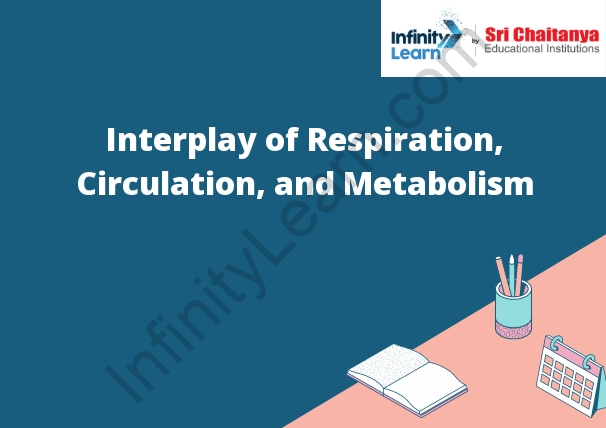Table of Contents
Introduction:
Respiration is the process that produces energy in the body by breaking down food molecules. The process of respiration occurs in the cells of the body and involves the transfer of energy from food to the cells. The energy is used to power the cell’s activities.
The process of respiration begins with the digestion of food. Digestion breaks the food down into smaller molecules that can be absorbed by the cells. The cells then use the energy from the food to power their activities.
The cells produce carbon dioxide and water as byproducts of respiration. The carbon dioxide is expelled from the body through the lungs, and the water is excreted in the urine and sweat.

Importance of Respiration in Human Beings
Respiration is one of the most important processes that occur in human beings. This process is responsible for the exchange of gases between the body and the environment. It is through respiration that the body obtains oxygen from the air and expels carbon dioxide.
Respiration is a vital process that is necessary for the survival of human beings. The body cannot function without oxygen, which is essential for the production of energy. The process of respiration also helps to remove waste products from the body.
There are a number of factors that can affect respiration. The most common factors that can affect this process are the environment and the health of the individual. The type of climate and the level of pollution in the environment can affect the rate of respiration. The health of the individual can also affect the rate of respiration. Conditions such as asthma can affect the ability of the individual to breathe properly.
Respiration is an important process that plays a vital role in the health of human beings. It is necessary for the body to obtain oxygen in order to produce energy. It is also necessary for the body to remove waste products. The environment and the health of the individual can affect the rate of respiration.
About Cell Metabolism
Cell metabolism is the process that produces energy in cells. This energy is used to carry out the cell’s functions, such as replication and movement. The energy is produced by the breakdown of molecules, such as glucose, in a process called catabolism. Glucose is a simple sugar that is found in food. It is broken down in the body to produce energy. The energy is used to power the cell’s activities and to synthesize new molecules.
Respiratory Acclimatization in the Humans
The human respiratory system is capable of adapting to a wide range of environmental conditions. The process of respiratory acclimatization occurs over time, and allows the body to better adjust to changes in air temperature and humidity. The respiratory system can also adapt to high altitudes, where the air is thinner and contains less oxygen.
The human respiratory system is capable of adapting to a wide range of environmental conditions. The process of respiratory acclimatization occurs over time, and allows the body to better adjust to changes in air temperature and humidity. The respiratory system can also adapt to high altitudes, where the air is thinner and contains less oxygen.
One of the most important adaptations that occurs with respiratory acclimatization is an increase in the number of red blood cells. This allows the body to better absorb oxygen from the air, and results in improved performance at high altitudes. The respiratory system can also adapt to changes in air temperature and humidity, by adjusting the amount of water that is exhaled from the lungs. This helps to prevent dehydration and heat exhaustion.
What is the Role of Oxygen During Respiration?
The role of oxygen during respiration is to accept electrons from food molecules in the cytoplasm of cells and to transport them to the mitochondria. There, the electrons combine with hydrogen ions to form water, and the energy released is used to synthesize adenosine triphosphate (ATP), the cell’s main energy source.
The role of oxygen during respiration is to combine with glucose to create carbon dioxide and water. The carbon dioxide is then expelled from the body, and the water is used by the body to carry essential nutrients and help regulate body temperature.
Initial Respiration Response:
The initial respiration response is the body’s initial response to a stimulus that causes it to breathe. This response can be caused by a number of things, such as an increase in carbon dioxide levels, a decrease in oxygen levels, or a change in the pH levels of the body. The initial respiration response is mediated by the respiratory center in the brain, which is responsible for controlling the rate and depth of breathing.
In the initial respiratory response, the body’s autonomic nervous system (ANS) sends impulses to the respiratory muscles to increase the rate and depth of breathing. This response is automatic and usually occurs within seconds of exposure to a stimulus that causes a person to start breathing faster, such as smoke, gas, or a foreign body in the airway.
The autonomic nervous system is divided into two parts: the sympathetic nervous system and the parasympathetic nervous system. The sympathetic nervous system is the part of the autonomic nervous system that is responsible for the “fight or flight” response. The parasympathetic nervous system is the part of the autonomic nervous system that is responsible for the “rest and digest” response.
The initial respiratory response is a result of the sympathetic nervous system’s “fight or flight” response. The sympathetic nervous system stimulates the respiratory muscles to breathe faster and deeper in order to get more oxygen to the muscles. The parasympathetic nervous system usually inhibits the respiratory muscles, but it is overridden by the sympathetic nervous system during the initial respiratory response.









